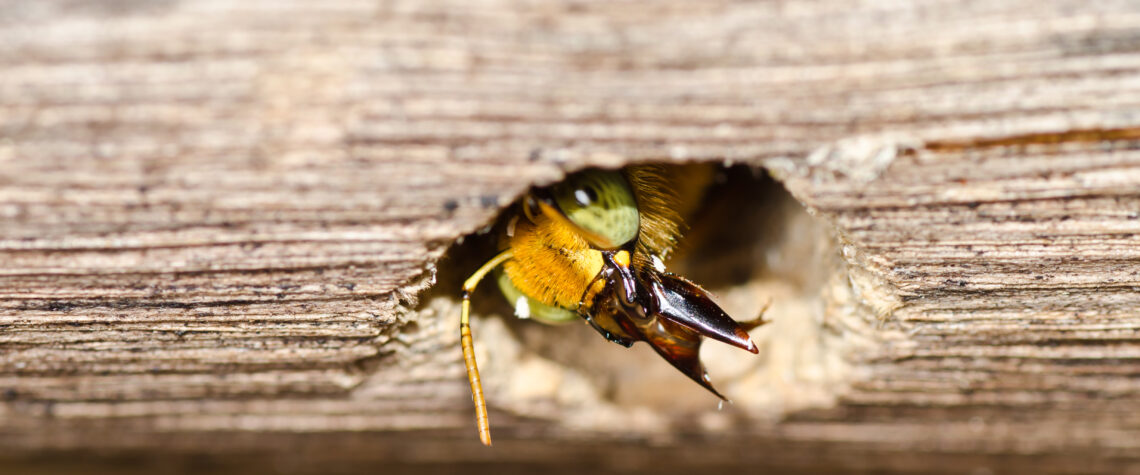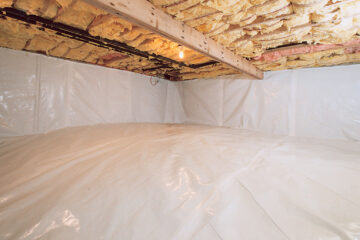Ah, spring! Longer days, blooming flowers, and, of course, the unmistakable buzz of carpenter bees in your yard. These big, bold insects often raise alarms due to their seemingly “aggressive” behavior. However, beyond the intimidating buzz, the scarier thing about these bugs is their secret life of extraordinary complexity and craftsmanship.
What do Carpenter Bees Look Like?
Carpenter bees, often mistaken for bumblebees, are easy to spot with their black and yellow bodies and shiny hairless abdomens. Unlike bumblebees, they do not have stripes and are much larger, growing up to 1 inch long. They prefer a solitary lifestyle and don’t nest in large colonies. You’ll often see an unusual behavior of them clumsily bumping into each other while flying, which sets them apart.
These skilled woodworkers make their homes inside wood by chewing through it, showcasing their unique nesting habits. This is a problem! Each nest begins with a hole that is approximately ½” in diameter (the size of the female), a 90-degree turn, and then 6 to 8 successive chambers per nest. The female carpenter bee could return to the same nesting site year after year. Who wouldn’t after all that work?
If one bee can cause that type of damage, consider for a moment what several female bees, establishing their nests, will do to your property.
Spotting Carpenter Bee Damage
Holes in Wooden Surfaces
These holes will be perfectly round, clean, and smooth, with no visible sawdust or shavings around them. Carpenter bees use the sawdust from burrowing to create partitions in their nests, mixing it with nectar to form particle-board-like walls. The entrance holes are approximately the size of a penny.
Carpenter bees have a preference for unfinished and unpainted soft wood, frequently targeting pine. They can cause damage to doors, house siding, railings, fences, lawn furniture, and, most commonly, decks. Their activity in unfinished wood can lead to unsightly damage and encourage rot, especially when burrowing into structural supports under decks or in barns.
Encouraging Other Pests
Carpenter bee nests can attract woodpeckers which can damage your home as they try to get to the nests. Carpenter bee nests can also attract other pests, such as wasps and hornets, who can use the holes as starting points for infestations. Because of these other pests, carpenter bee damage can be serious.
Effective Ways to Manage Carpenter Bees
If you find yourself facing carpenter bee infestations, there are practical and eco-friendly methods to manage them before the professionals get there:
- Fill Holes with Metallic Materials:Carpenter bees can chew through wood or plaster, but they won’t tackle metallic materials. Use steel wool or compressed tin foil to fill the holes, and smooth over cracks with plaster. This prevents re-infestation.
- Sand and Refinish:
Once the plaster is dry, sand and refinish any damaged wood surfaces. If the wood is unpainted, consider adding a fresh coat of paint or finish, deterring bees until it’s time for a new coat. - Act Promptly:
Wear heavy gloves and consider insect repellent when filling bee holes to avoid retaliation. Fill the holes when bees are away during the day, and act promptly to prevent egg-laying in the wood.
If you think you have a carpenter bee infestation, call us at (866)WAYNES1 for a consultation.
Meredith Boyd, Social Media and Marketing Specialist – www.callwaynes.com














